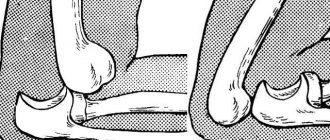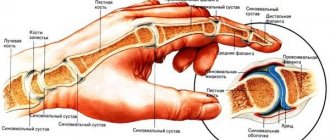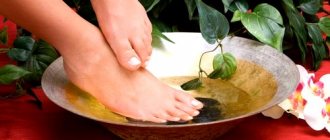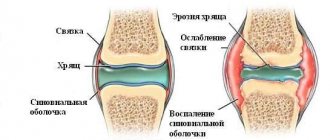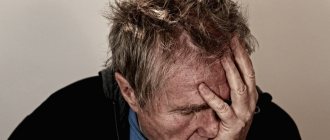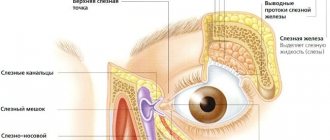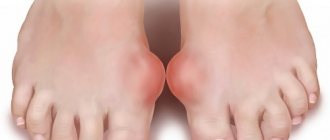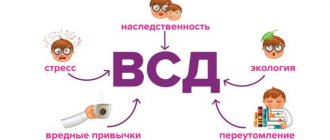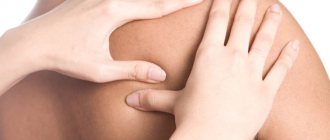“Happiness is like health.
When you don’t notice it, it’s there.”
I.S. Turgenev
When a person does not feel pain, he is happy. But how many tricks the body prepares for us! The human body signals the slightest illness or disruption of normal functioning through pain. A significant symptom for diagnosing diseases is joint pain. In medical parlance, joint pain is called “arthralgia.”
Every 5 people aged 30-35 years suffer from joint pain. Pain impulses can be short-term, long-lasting, focal and local.
Why do joints hurt, as evidenced by the pain syndrome? Painful sensations are the first symptom that irreversible changes are occurring in the joints. Arthralgia occurs due to irritation of neuroreceptors located in the joint structure. Such pain reduces the quality of life, and sometimes leads to a hospital bed.
What kind of pain is there?
Arthralgia is a reason to see a doctor. Depending on where the impulse is localized, at what age the painful symptoms first appeared, and what additional symptoms they are accompanied by, the physician suggests a possible cause of the ailment. The specificity of the pain itself is of great importance. What is it like?
Reflected. Joints are bothered by painful signals and for a number of reasons not related to joint diseases or their damage. Arthralgia of this type is called “referred”. In infectious diseases that occur with fever (flu, ARVI, sore throat), shooting joint pain occurs. The pain syndrome disappears as soon as the underlying disease is defeated.
Referred arthralgia occurs in the joints and due to damage to neighboring articular parts (pain in the shoulder joint sends a pain impulse to the arm, pain in the knee joint comes from the hip joint). Referred arthralgia intensifies after intense load on the affected area and is felt at rest.
Mechanical arthralgia. “Mechanical” (or starting) is called painful discomfort in a joint caused by metabolic-dystrophic changes in this part of the body or damage. Joint pain of this nature occurs in people of any age:
- In young people, mechanical arthralgia most often occurs due to injury, after exercise, or as a consequence of inflammatory processes (arthritis).
- Elderly people suffer from these pains due to age-related metabolic disorders (the cartilage covering of the joint is destroyed and causes painful impulses). Such conditions are called arthrosis.
Mechanical arthralgia is low in intensity, the pain intensifies when walking, after physical exertion, and is especially pronounced in the evening. When the body is at rest, the painful impulse fades.
Chronic joint pain. Arthralgia develops into chronic if the pain syndrome does not give rest to a person for more than 2.5-3 months. Such pain no longer depends on the current illness. Now its cause is a psychological factor (a complex of nervous disorders).
Depression plays a special role in the development of chronic arthralgia. Depressive states often occur in a latent phase and are invisible to a person. The patient is unaware of their presence, and hidden depression actively destroys the body.
Diagnostics
What to do if your joints hurt? Such a symptom cannot be ignored, and it is imperative to find out the cause. Diagnosis of some diseases is straightforward, while others most often require a comprehensive examination.
Since it is difficult to independently determine the possible cause of the disease, it is best to consult a therapist. He will conduct an initial examination, provide the necessary assistance and issue referrals for tests. You may need to consult an orthopedist, traumatologist, cardiologist, neurologist or rheumatologist.
A significant diagnostic criterion is a clinical and biochemical blood test. An x-ray is required, the results of which will show the presence of deformities, osteoporosis, subluxations or bone growths (osteophytes).
The doctor may order an ultrasound of the joints, computed tomography or magnetic resonance imaging for the purpose of a detailed examination. In some cases, a diagnostic puncture or arthroscopy cannot be avoided.
Main causes of arthralgia
The human joint is a complex anatomical structure. Painful impulses in this organ affect all parts of the body that take part in creating the joint. These include muscles, ligaments, bones, intra-articular cavities, cartilage and tendons.
Pathological conditions such as sprains, inflammation, injuries and sprains also affect joint health. Such factors lead to the development of joint diseases, which are the main culprits of arthralgia:
Synovitis. Inflammation of the synovium (the capsule surrounding the joint). The disease appears as a result of metabolic disorders or ongoing chronic diseases. Synovitis often develops as a result of injury to the joint. Most often, the knee joint is affected (the patient experiences pain radiating to the leg); less often, the ankle and shoulder joints are affected.
Symptoms. The joint increases in size, its contours smooth out and become invisible. The pain syndrome is not very pronounced, the patient feels it as a sensation of internal distension, aching. Fever and weakness appear.
Bursitis. Inflammatory process of the cavity between the articular surfaces of the bones (synovial bursa). The main culprit of the disease is bacteria (pathogenic microorganisms) that penetrate the cavity of the synovial bursa. Pathogenic flora enters the cavity in different ways; infectious diseases and purulent inflammations influence the spread.
The bursa becomes infected as a result of injury, with serious cuts and prolonged blows. The general condition of the body, the strength of the immune system and the specifics of professions are of great importance. Miners often suffer from elbow bursitis, athletes and runners from knee bursitis. Weightlifters experience pain in the shoulder joint when raising their arms.
Symptoms. The disease begins with pain in the area of the affected joint. As bacteria accumulate in the bursa, the affected area swells and turns red. Acute phase bursitis is accompanied by fever and fever. Patients complain of drowsiness, constant chills and fatigue.
Tendinitis. Tendon inflammation. The disease is divided into acute and chronic. Chronic tendonitis leads to degenerative changes in the tendon. The disease affects the tendon area adjacent to the bone. The tendons most often affected are the heel, elbow, hip, shoulder, and knee.
The culprits of the disease include increased motor activity, regular microtraumas (in sports), and poor posture. The disease is provoked by congenital abnormalities in the structure of tendons and current diseases. The risk zone includes people engaged in constant physical labor.
Symptoms. When you move or when you raise your arm, a sharp, acute pain begins in the affected joint, which goes away with rest. The skin over the inflamed area swells, turns red, and the skin is hot to the touch. When moving, a crunching sound is heard from the affected tendon.
Gout. Failure in purine metabolism (removal of uric acid from the body and accumulation of fluid in the body). Normally, acid leaves with urine. But with illness, uric acid increases its concentration, and the kidneys cannot cope with the cleansing work. Uric acid accumulates in the body in the form of microscopic crystals.
Acid is deposited in the joints. Over time, this gives rise to inflammation and disease. The disease is provoked by kidney disease and long-term use of certain medications. The joints of the toes, arms, hands, ankles and knees are affected.
Symptoms. The disease manifests itself as acute, unbearable pain in the joint, redness and swelling of the area. The joint is painful to the touch and hot. Attacks of pain begin at night.
Osteoarthritis. A common disease in which cartilage undergoes degeneration and decay. After regression of the cartilage tissue, dystrophic damage begins in the tissues and joints surrounding the affected cartilage (severe pain is noted when bending and straightening the arms and legs). A dangerous disease that can put a patient in a wheelchair, most often affects men after 60 years of age. In women, the disease begins earlier (from the age of 50 years).
The causes of osteoarthritis include age-related changes in cartilage tissue (its inability to produce new cells and regenerate, cartilage is destroyed). There is a high risk of fractures. The development of the disease is influenced by congenital structural features of cartilaginous structures, serious injuries and complications of infectious diseases.
Symptoms. The disease is manifested by a slight pain in the joint and surrounding muscles when performing actions (starting pain). Nagging pain intensifies with prolonged walking and exercise. At rest, the pain goes away.
There are many causes of arthralgia. Women should pay special attention to the condition of their joints. According to statistics, representatives of the fair sex are most often susceptible to joint pain. In addition to gender, the risk zone includes the following categories of citizens:
- Overweight people.
- Elderly people over 60 years of age.
- Constantly traumatic bones.
- With congenital defects (clubfoot, flatfoot).
- Specific profession (loaders, athletes, bodybuilders).
In addition to diseases that provoke arthralgia, joints can also hurt due to the development of their own diseases.
Body aches with fever and other symptoms - causes
Fever, body aches, weakness
– these symptoms always accompany acute respiratory infections, acute respiratory viral infections and other viral or bacterial infections of various organs and systems. In principle, the presence of fever, body aches and weakness is a sign of some kind of infectious disease.
Read also: How joints hurt
Complex products help eliminate the unpleasant symptoms of ARVI and maintain efficiency, but often contain phenylephrine, a substance that increases blood pressure, which gives a feeling of vigor, but can cause side effects from the cardiovascular system. Therefore, in some cases, it is better to choose a drug without components of this kind, for example, AntiGrippin from NaturProduct, which helps relieve the unpleasant symptoms of ARVI without causing an increase in blood pressure. There are contraindications. It is necessary to consult a specialist
Diarrhea, fever and body aches
are signs of an infectious disease in which the pathogen multiplies in the human intestines. Moreover, the presence of temperature in the symptom complex indicates a severe infection (for example, salmonellosis, cholera, typhoid, etc.), and not food poisoning, in which chills almost never develop. In children, diarrhea, fever and body aches can accompany infections not only of the intestines, but also of other organs, for example, flu, bronchitis, etc.
Nausea, fever and body aches
can develop under the following conditions:
- Flu;
- Meningitis or encephalitis;
- Genital herpes;
- Candidiasis of the upper respiratory tract;
- The initial stage of infectious-toxic shock;
- Epidemic myalgia.
The combined appearance of nausea, fever and body aches is a sign of a serious condition that requires consultation with a doctor.
Fever, cough, body aches
develop in severe respiratory infections caused by any pathogenic or opportunistic microorganisms. Also, fever, cough and body aches can be signs of a cold, acute respiratory infection or acute respiratory viral infection, occurring with inflammatory damage to the pharynx, trachea or bronchi.
Chills and body aches
are signs of intoxication, which can occur with infectious, inflammatory and colds (for example, influenza, acute respiratory infections, bronchitis, tonsillitis, chickenpox, etc.), as well as with much more severe inflammatory processes in internal organs (for example, cystitis, pyelonephritis , hepatitis, pancreatitis, appendicitis, etc.). In addition, chills and body aches can appear due to various poisonings - poisons, food, medications, heavy metals and other toxic substances.
Joint diseases
Without movement there is no life! The human body is elastic and flexible, capable of movement thanks to the skeletal apparatus with its constituent muscles, joints and ligaments. Joint diseases are common human ailments, in severe cases leading to disability (when it is impossible to bend the knee). Joint diseases are divided into two large groups:
Arthrosis
Chronic diseases of a non-inflammatory nature. Arthrosis develops slowly, sometimes throughout life. The disease approaches a person unnoticed, without making itself known at first. Only occasionally does a person feel painful impulses when putting stress on the affected joint. At rest, the soreness goes away, and the patient safely forgets about the malaise.
As the disease develops, arthralgia begins at night, pain is accompanied by inflammation of the soft tissues surrounding the affected joint. The tumor in this place becomes visually noticeable, and a characteristic crunching sound appears. As the disease progresses, the joint becomes deformed and its mobility decreases.
Sometimes insidious arthrosis develops rapidly, destroying the joint apparatus literally in 2-3 months and sending a person to a wheelchair. Depending on the location of the joint damage, arthrosis has the following names:
- Knee (gonarthrosis).
- Hip (coxarthrosis).
- Humeroscapular (periarthrosis).
- Small ankles, phalanges and knees (deforming osteoarthritis).
It has been noted that the disease is rarely activated in the elbow joint and never affects the shoulder girdle. Modern arthrosis is rapidly getting younger, the disease develops after 30 years. Women are 2-2.5 times more likely to develop arthrosis. And by the age of 60-65, the disease manifests itself in almost all people.
Causes of the disease. The main cause of arthrosis is the aging of cartilage tissue at the cellular level. The course and development of the disease are accelerated by hereditary factors (in this case, the disease manifests itself even in a child), metabolic and salt disturbances in the body, and a sedentary lifestyle. Like any tissue of the body, joints are regularly renewed and regenerate cells.
With age, regeneration slows down, and the body does not have time to replace “dead” cells with new ones. The nutrition of the joint affects the regeneration processes (it occurs with the help of joint fluid). The joint (synovial) fluid plays the role of a “lubricant”; it allows the joints to glide easily.
As we grow older, the amount of fluid decreases, which provokes trauma to the joint system. With every movement, the joints are injured and destroyed. The development of the disease is described in 3 stages:
- Stage I. Articular changes affect the cartilaginous capsule capsule. Disturbances occur at the biochemical level in the composition of the joint fluid. The joint is not able to withstand the usual loads, which provokes the appearance of arthralgia and inflammation.
- Stage II. Destruction of the articular cartilage becomes noticeable. Microcracks, abrasions, and osteophytes (pathological growths) appear on the surface of the bone tissue.
- Stage III. Bone deformation is already obvious. The joints become twisted and deformed. Reduction of ligaments leads to a sharp limitation of movements, or to abnormal mobility.
Arthritis
Arthritis combines joint diseases of an inflammatory nature. These can be independent diseases (infectious arthritis) or ailments that manifest themselves against the background or as a consequence of other diseases. These include Reiter's syndrome, rheumatoid or reactive arthritis.
Arthritis mainly affects elderly and middle-aged people with weakened immune systems. There are acute arthritis (which develops instantly) and chronic. Chronic arthritis is accompanied by constant aching pain.
Inflammations are not painless. Until the cause of the disease is identified and eliminated, the person is haunted by constant manifestations of arthralgia. Inflammatory processes are the causes of pain in the joints of the arms and legs. The painful syndrome of arthritis occurs in conjunction with other manifestations of the disease:
- Swelling of soft tissues.
- Temperature increase.
- Feeling of heat in the joint (hyperthermia).
- Limitations of mobility of the affected joint apparatus.
Arthritis occurs with damage to one (mono-) or several joints at once (polyarthritis). Often a painful impulse migrates from the affected joint to the adjacent one. Arthritis has several types:
- Rheumatoid. Small and large joints are affected. The nature of the pain is piercing, the pain sensations are increasing.
- Rheumatic. The disease affects several small and large articular apparatuses. The patient feels a sharp, piercing pain.
- Reactive. Initially, inflammation affects small joints, less often inflammatory processes overcome large ones. Acute pain.
- Gouty. Most often, the disease affects small joints; first one joint becomes inflamed, then several. Inflammatory processes occur against the background of piercing, shooting pain.
- Reiter's syndrome. 1-2 large joints become inflamed. Acute pain.
- Pyogenic (infectious). The disease affects several large and small joints, the inflammation goes away with sharp, shooting pain.
Causes of arthritis. The culprits that provoke a destructive disease include long-term infectious diseases. Regular injuries, allergies, and metabolic disorders affect the appearance of the disease. The disease is caused by a lack of vitamins, disruptions in the immune system, and hereditary predisposition.
The body perceives the joint membrane as a foreign body and activates immune activity against its own tissue. Inflammation begins, causing deformation of the joint, destruction of cartilage, the appearance of erosions of bone tissue and deterioration in the mobility of the articular apparatus.
Arthralgia as a complication
Joint pain can occur and torment a person for reasons far from inflammatory processes in the articular apparatus or cartilage degeneration. Arthralgia manifests itself with the following current diseases or conditions:
Joint pain during menopause. During menopause, a woman's body undergoes numerous changes. The production of the main female hormones - estrogen and progesterone - decreases. The influence of these hormones on a woman’s body is enormous.
Estrogen is responsible for the state of the nervous system, the functionality of the mammary glands, bones and skin. With a decrease in the amount of estrogen, a woman during this period experiences menopausal symptoms (hot flashes, irritability, discomfort and dryness of the genitals). There is pain in the muscles and joints.
During menopause, arthralgia occurs for two reasons (in the absence of joint diseases):
- Osteoporosis develops. With age, bone tissue thins, it becomes loose and fragile. A drop in estrogen levels decreases calcium and protein metabolism, which destroys cartilage tissue.
- Deforming osteoarthritis appears. During menopause, collagen production decreases, which provokes a decrease in the elasticity of the joint apparatus. In addition to arthralgia, osteoarthritis is manifested by morning stiffness of movements, crunching, and clicking in the joints. Over time, the joints become deformed and twisted.
Joint pain after the flu. ARVI, sore throat, acute respiratory infections and influenza do not pass without leaving a mark on human health. Severe infectious colds provoke the development of rheumatoid arthritis. How do we treat a viral infection? Antibiotics, potent antiviral drugs.
Long-term use of such drugs disrupts the normal functioning of the immune system. The immune system goes on strike against the cells of its own body. Any organs and joints are subject to attack, including. Many people who have suffered serious viral infections have pain in their bones and joints after the flu, causing a lot of discomfort.
Arthralgia after chemotherapy. Chemotherapy is a life-saving treatment for a person suffering from cancer. Thanks to chemotherapy sessions, the patient gets the opportunity to live a full life. But chemotherapy is treacherous. While healing from dangerous cancer, it negatively affects the functioning of the body’s organs.
There is a large list of side effects that are caused by chemotherapy. Some of them are severe nagging pain in the joints, lasting 2-3 months after the course of treatment. Why is this happening? Active substances are introduced into the patient's body. Spreading throughout the body through the blood circulation, the aggressive environment enters not only the cancerous tumor, but also other parts of the body, causing pain syndromes.
Joint pain during pregnancy. During this happy and important period, expectant mothers face numerous difficulties and unpleasant symptoms. Pain occurs in various parts of the body. Painful syndromes during pregnancy are normal and have to be tolerated.
Joint pain, which often torments a pregnant woman, causes excruciating discomfort. The causes of persistent unpleasant painful syndromes are the following facts:
- Lack of vitamin D3 and calcium. The joints begin to ache from the second trimester. During this period, the baby actively grows and develops, consuming a lot of nutrients, mercilessly taking them away from the mother.
- Growing load on the musculoskeletal system. The tummy keeps growing, and the load on the unfortunate bones increases. The result is pain in the joint apparatus. The pain is felt especially strongly in the morning (during the night's rest, the body “weans” from increased stress).
- Increase in the hormone relaxin. Relaxin is intensively produced in the 2nd and 3rd trimester. Thanks to relaxin, the bones of a pregnant woman become elastic, the pelvic ligaments soften (this is necessary during childbirth). But relaxin relaxes other bones, ligaments and joints, causing painful symptoms.
But why do new mothers continue to experience joint pain after giving birth? There is an explanation for this. The body is being restored! If postpartum arthralgia is not caused by a disease, then joint pain in young mothers is quite normal, it is physiological. During childbirth, a woman’s joints shift, returning to their original shape, and they make themselves felt with aching pain.
Some mothers complain of postpartum pain in the joints of their arms and hands. The most common cause of such arthralgia is tunnel syndrome. During the last stages of pregnancy, a woman swells; as a result of the swelling, the tissue compresses the median nerve.
After childbirth, swelling does not subside immediately; carpal tunnel syndrome continues for some time. Tingling, numbness in the fingers and dull pain in the joints bother mommy until the body recovers completely.
Risk factors
There are several risk factors that can lead to the disease. One of the most common is heredity. If, for example, a grandmother and mother suffered from several groups of joints at the same time, then sooner or later this problem may arise in subsequent generations.
Gender is another risk factor. It has been noted that joint diseases are several times more common among women than among men. At the same time, women often fall ill after the onset of menopause. This is due to the fact that before it, women are “protected” by their own female sex hormones. With age, their number begins to inexorably decrease, and after they practically disappear, there is no one to protect the woman, and the joints begin to gradually deform and collapse. For men, this problem practically does not arise. Therefore, due to hormonal imbalances, their joints hurt somewhat less frequently than women.
In men, joint pain occurs mainly due to heavy physical labor. This is due to the fact that they are constantly exposed to heavy load. Gradually, the cartilage begins to wear out, the joints themselves become inflamed and at the same time deformed.
Read also: Which doctor treats joints
People who often suffer from a disease such as tonsillitis may complain that their joints begin to ache. This is due to the fact that bacteria that cause sore throat can also negatively affect joints, especially large ones.
The causes and treatment of pain in all joints of the body are closely interrelated.
What to do with arthralgia?
Pain is an alarming signal from the body about its malfunctions and incipient diseases. Arthralgia is caused by a number of diseases and pathological conditions. Competent treatment of joint pain depends on the accuracy of the diagnosis and identification of the true cause of the painful symptom.
The first and most important step towards healing joint pain is finding out its causes! At the initial stage of treatment, it is necessary to determine the factor that triggers the destructive process (trauma, inflammation, concomitant disease).
Only a doctor can adequately assess the condition of the joint, determine the culprit of the pain and prescribe competent treatment!
Which doctor should I contact? If you are sure that an injury was the source of arthralgia, go to a traumatologist for help. In other cases, the path lies in an appointment with a rheumatologist and therapist. Large clinics also employ highly specialized specialists in the field of joint problems. They are called arthrologists.
What will the medic do?
To determine the cause of arthralgia, the patient will undergo laboratory and instrumental studies (X-ray, ultrasound of joints, rheumatic tests). It is difficult to completely cure joint diseases, but stopping the progression of the destructive process with the help of a set of measures is quite possible. What medications does the doctor use to treat arthralgia?
- Rest mode. The affected joints must be given rest. This is achieved by fixing the joint with rigid bandages and elastic bandages.
- Cold. Treatment for exposure to cold procedures is carried out if arthralgia is caused by injury. In cases of cartilage degeneration (atrophy) and arthritis, cold is a strict contraindication.
- Exposure to heat. Effective in relieving long-term joint pain. The method is not recommended for use in the presence of purulent arthritis and post-traumatic conditions.
- Painkillers. Only a doctor can prescribe analgesics! You cannot prescribe or take aggressive medications on your own! Their illiterate use can cause side effects and negatively affect the functioning of internal organs.
- Anti-inflammatory drugs. They are prescribed in the form of injections or tablets for all cases of arthralgia. In addition to the anti-inflammatory effect, the drugs are good as painkillers.
- Chondroprotectors. Medicines designed to strengthen articular cartilage. Such remedies restore the damaged joint, but do not relieve pain. These include Noltrex, Artron, Teraflex, Movex, Singial. They are prescribed for degenerative diseases of cartilage and articular apparatus.
- Massotherapy. Therapeutic massage is prescribed only by a doctor; it cannot be performed for arthralgia caused by joint damage. A course of massage promotes the resorption of muscle knots, which relieves pain in the joints and helps restore range of motion.
The patch for joint pain has proven itself quite well. It is sold in pharmacies and relieves pain from mechanical injuries and inflammatory processes. The patch contains herbal medicines, so its effect does not occur immediately.
Treatment at home will be more effective if traditional medicine methods are added to the remedies prescribed by doctors.
Prevention and treatment
Diseases are treated using the following therapy options:
- Medication. Only inflammatory processes and pain syndromes are removed. Without additional techniques, the causes of the disease cannot be eliminated.
- Physiotherapeutic. Warming, analgesic procedures using medical equipment of various effects. Ultrasound, electrical stimulation.
- Physiotherapy. A set of simple special exercises is prescribed by a doctor to stimulate physical activity.
- Manual therapy. A combination of various techniques of active and passive manual pressure on the knees, shoulders, hands, feet, legs, fingers, knees or elbows. This technique refers to the official methods of treatment. It is useful both for prevention and for improving the condition of patients.
- Surgical intervention. It is prescribed only in hopeless, advanced cases. It has many contraindications and can cause other diseases.
Only after making a diagnosis and determining the causes, the attending physician prescribes a treatment regimen using one or another technique.
Diseases in most cases are chronic. With proper treatment, degenerative processes only slow down.
Therefore, diseases are much easier to prevent than to cure:
- Care must be taken to promptly treat any infections.
- The diet should contain sufficient amounts of vitamins, minerals and trace elements. Vitamins A, B5 and B6, C, E, as well as copper, selenium, and glucosamine are especially beneficial for joints.
- In addition to proper nutrition, maintaining an active lifestyle, feasible sports activity and daily walks will help prevent joint diseases.
- Gradual hardening of the body.
Simple steps will help prevent long treatment, severe pain and disruption of your usual lifestyle.
